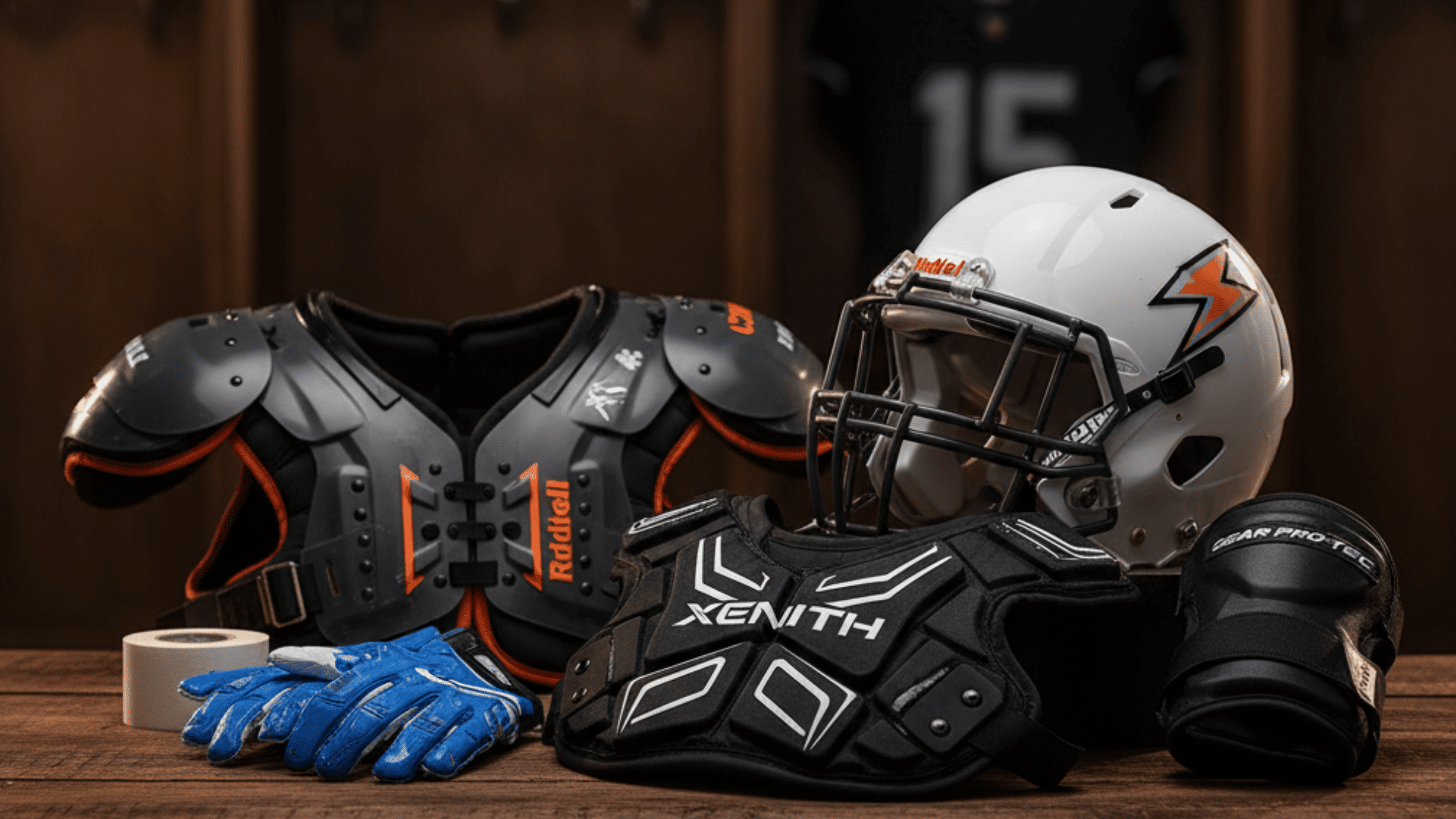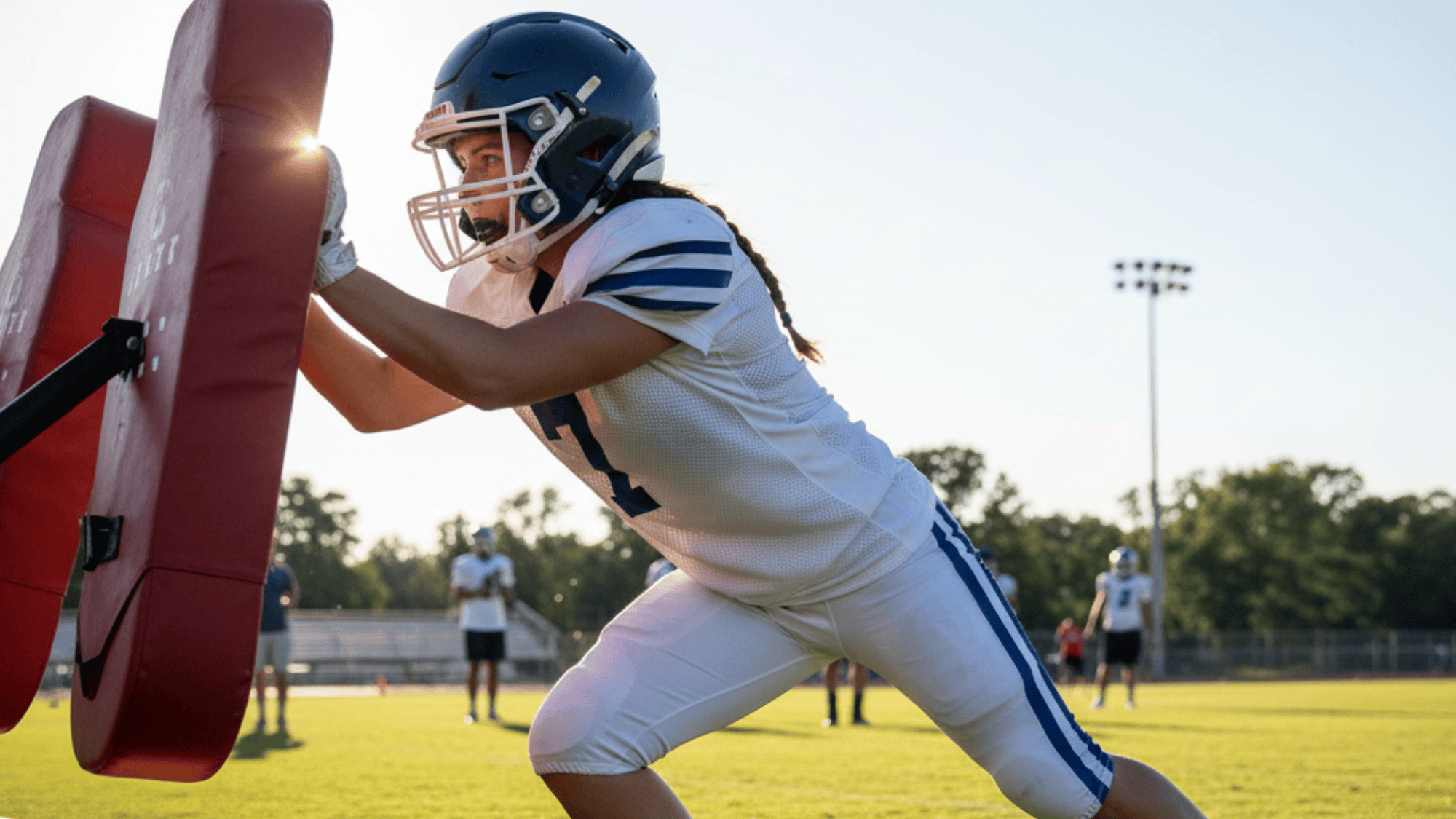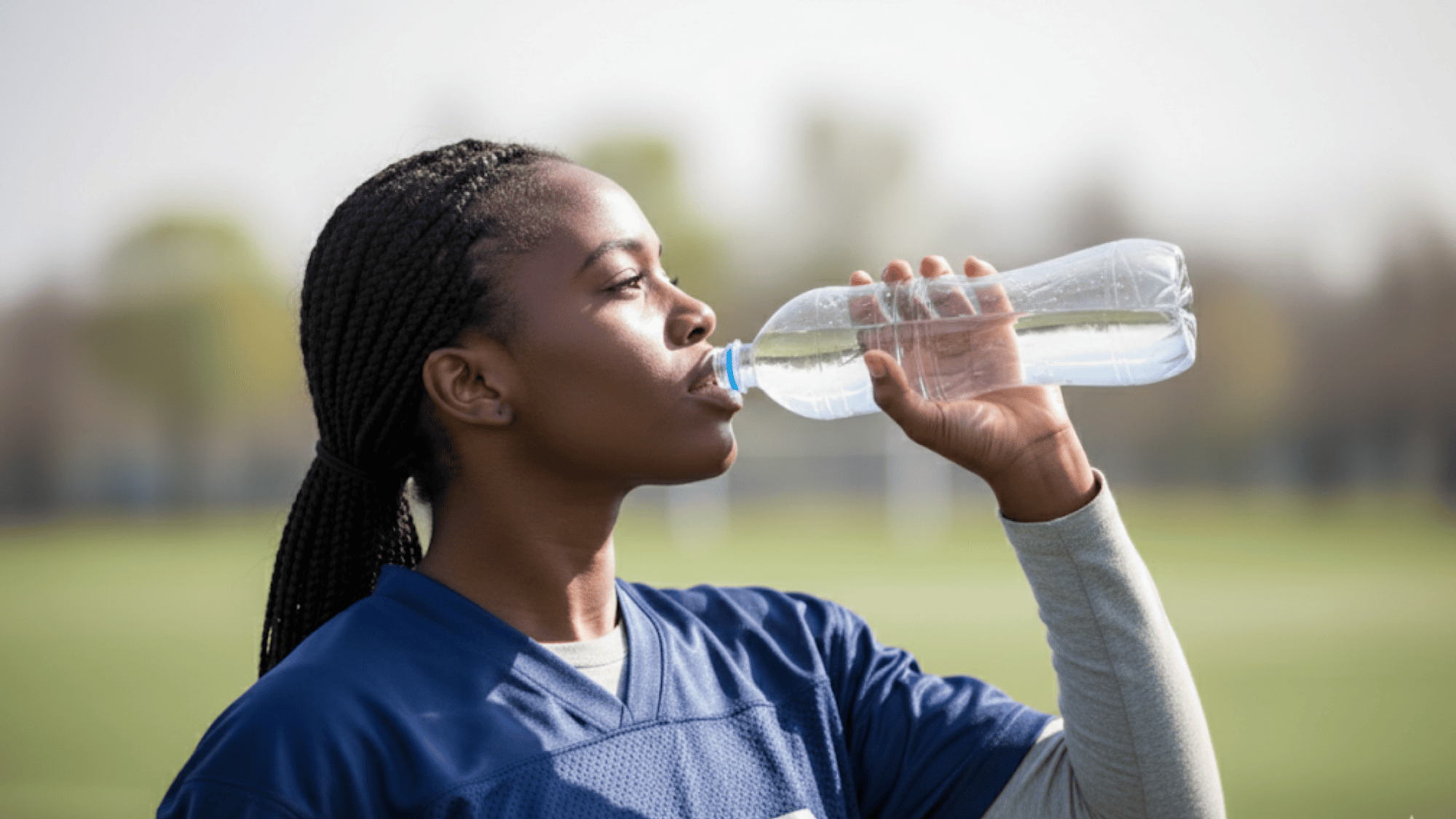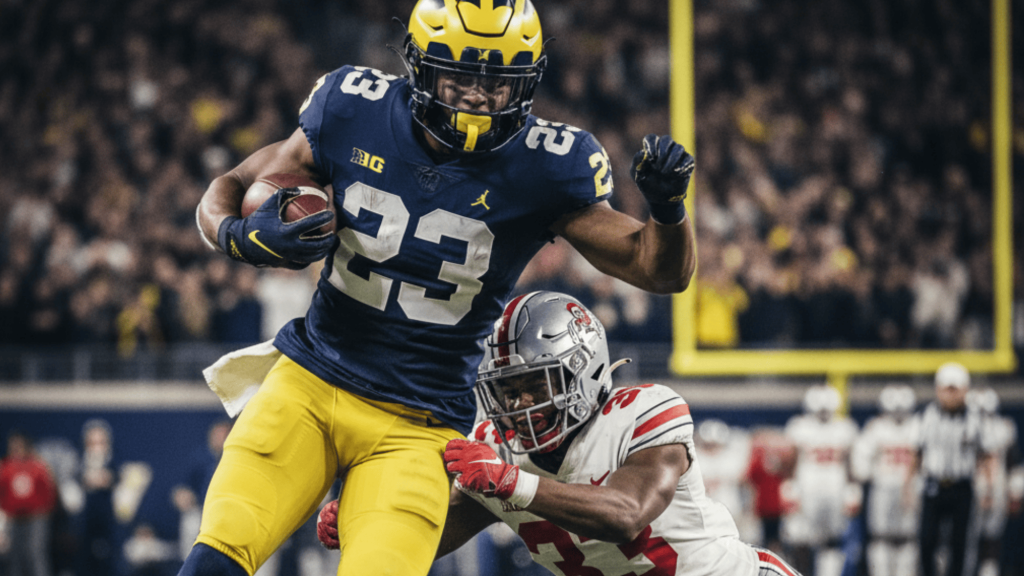Football is one of the most loved sports in the United States. From Friday night lights at high schools to packed college stadiums and professional leagues, the game brings energy, teamwork, and excitement.
But with all that action comes risk. Football is a high-contact sport, and without proper safety measures, injuries can happen quickly.
That’s why safety isn’t optional; it’s essential. Whether you’re a parent, coach, or player, learning how to reduce the chances of injury can make football both safer and more enjoyable.
In this blog, we’ll look at why football safety is important and share football safety tips to prevent injuries.
Why Football Safety Is Important
Every year, thousands of football players, from youth leagues to professional leagues, visit the emergency room with injuries.
According to reports, football is one of the top sports for concussions, sprains, fractures, and overuse injuries.
- Concussions are among the most serious. These brain injuries can cause headaches, confusion, dizziness, and long-term cognitive issues if ignored.
- Sprains and fractures are also common, especially in the knees, ankles, and wrists.
- Overuse injuries, such as tendonitis, can occur when players fail to give their bodies sufficient time to rest.
Failing to address these risks can lead to long-term health issues. Some former players have lasting joint pain, back problems, and conditions like CTE from repeated head injuries.
That’s why football injury prevention must be a priority. With the right gear, proper training, and awareness, many of these injuries can be prevented or reduced significantly.
Gear & Equipment Safety

The right equipment is the foundation of football safety. If gear doesn’t fit or isn’t maintained, the risk of injury rises sharply.
1. Wear a Properly Fitted Helmet
A helmet is the most important piece of football safety gear. It should have a hard outer shell, thick inner padding, and a snug fit that doesn’t wobble around.
The chin strap must be secured, and the face mask should not obstruct vision. A loose or cracked helmet puts a player at major risk for concussions and head injuries.
2. Check Pads Regularly
Shoulder pads, thigh pads, knee pads, and hip pads are all designed to absorb impact. But worn or flattened padding loses its protective ability.
Players should inspect pads often and replace them if they are damaged. Coaches and parents should also help ensure pads are sized correctly and provide proper coverage.
3. Use a Mouthguard with Keeper Strap
Mouthguards aren’t just about protecting teeth. They also reduce the risk of jaw injuries and can even help prevent concussions by absorbing some shock from hits.
A keeper strap keeps the mouthguard attached to the helmet, preventing it from getting lost during play.
4. Choose the Right Footwear
Cleats provide traction on both grass and turf, helping players cut, sprint, and change direction without slipping. The right footwear also reduces ankle twists and knee strain.
Players should always select cleats that fit snugly, offer proper ankle support, and match the surface conditions.
Worn-out or poorly fitted shoes not only slow performance but also raise the risk of falls, sprains, and long-term foot pain.
5. Maintain & Replace Worn Gear
No piece of football equipment lasts forever. Helmets with cracks, pads with flattened cushioning, or shoes with worn-out soles should be replaced right away.
Hand-me-down gear may save money, but it can compromise safety if it no longer meets standards.
Technique & Training Safety

Even the best gear won’t help if players use unsafe techniques or skip preparation. Smart training builds strong bodies and safer playing habits.
6. Learn Proper Tackling Form
Tackling is one of the most dangerous aspects of football if done incorrectly. Players should learn to tackle with their shoulders, not their heads.
Coaches should emphasize wrapping arms around opponents rather than leading with the helmet. This reduces head and neck injuries.
7. Keep Your Head Up
Helmet-to-helmet contact is a leading cause of concussions and severe head trauma. Players must train to keep their heads up and eyes forward when tackling, blocking, or running plays.
Dropping the head not only increases injury risk but also reduces awareness of what’s happening on the field.
Good head positioning improves visibility, reaction time, and overall performance, while also keeping players safer from potentially hazardous collisions. Coaches should constantly reinforce this rule during practices and games.
8. Warm Up Before Every Game
Jumping into intense play with cold muscles is a recipe for strains and pulls. Warming up with light jogging, stretching, and mobility drills prepares the body for action.
Focus on the hips, knees, thighs, and calves, which are the areas most prone to football injuries.
9. Cool Down After Playing
Many players skip cooling down, but it’s one of the easiest ways to protect long-term health. Cooling down with light stretching and slow walking helps muscles recover, reduces stiffness, and improves overall flexibility.
It also helps lower the heart rate gradually, which is important after intense activity.
Taking just 10 minutes after a game or practice to cool down can prevent soreness, cramps, and tightness that might otherwise lead to injuries during the next session.
10. Build Strength & Flexibility
Conditioning isn’t just about performance; it’s about safety. Strong muscles and flexible joints can better absorb impact and reduce the risk of injury.
Players should include weight training, core exercises, and stretching in their routines. Year-round training, with breaks for rest, keeps the body prepared for the demands of football.
Health & Awareness Safety

Knowing when to stop, listening to your body, and taking care of your health is just as important as having the right equipment or training.
11. Stay Hydrated
Dehydration can cause cramps, fatigue, and even heat stroke, especially in hot weather. Players should drink water before, during, and after games.
Sports drinks may help replace electrolytes during longer activities, but water should always be the first choice.
12. Know the Signs of Concussion
Headache, dizziness, confusion, nausea, or blurred vision are all warning signs of a concussion. Players, coaches, and parents should learn to recognize these symptoms.
If any appear, the player must stop playing and consult a medical professional.
13. Report Injuries Immediately
Playing through pain doesn’t make anyone tougher; it makes injuries worse. Players should always tell a coach or trainer if something feels wrong.
Early treatment can mean the difference between a quick recovery and a season-ending injury.
14. Stop Playing When Hurt
Even minor injuries such as ankle twists, bruises, or pulled muscles require attention and rest. Continuing to play while hurt can cause further damage and turn a simple problem into a long-term condition.
Players should always rest, recover, and return to the field only after clearance from a doctor or athletic trainer.
This approach not only shortens recovery but also protects against repeated injuries. Smart athletes know that stopping when hurt is an investment in future performance.
15. Have an Emergency Plan
Teams should always have a clear emergency plan in place for practices and games. Coaches and staff should be trained in first aid, CPR, and injury management, with medical supplies ready at all times.
Quick access to medical professionals, whether on-site or nearby, can make all the difference in a serious situation.
Parents and players should also be aware of the plan so that everyone feels prepared. A well-organized response ensures faster care and greater peace of mind for all.
Additional Football Safety Measures
While the tips above cover the essentials, there are a few more strategies that can help reduce injuries and keep players safe.
- Rest & Recovery: Football is a demanding sport. Players need proper sleep and rest days to allow muscles and joints to heal. Overtraining can lead to fatigue and an increased risk of injury.
- Cross-Training Benefits: Playing multiple sports throughout the year helps avoid repetitive stress injuries from the same motions. It also develops different muscles, improving overall fitness.
- Coach & Parent Education: Safety starts with adults who teach and monitor players. Coaches should be trained in safe techniques, injury prevention, and emergency response. Parents should also understand the basics so they can support their children.
- League Safety Rules: Organizations like the NFL and USA Football have updated rules to reduce dangerous plays, such as limiting helmet-to-helmet hits. Following these guidelines helps players stay protected at every level.
By going beyond the basics, teams and players can create a stronger culture of safety that benefits everyone.
Conclusion
Football is more than a sport; it’s teamwork, discipline, and fun. However, none of that matters if players are constantly sidelined due to injuries.
By taking the right precautions, learning safe techniques, and listening to their bodies, players can enjoy the game while maintaining their health.
Remember: the best football players aren’t just strong and fast, they’re also smart about safety.
With these football safety tips to prevent injuries, you can stay in the game, protect your health, and focus on what matters most: enjoying football.





































